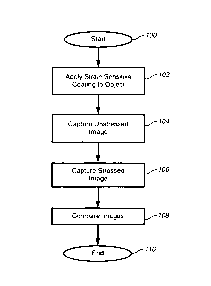Some of the information on this Web page has been provided by external sources. The Government of Canada is not responsible for the accuracy, reliability or currency of the information supplied by external sources. Users wishing to rely upon this information should consult directly with the source of the information. Content provided by external sources is not subject to official languages, privacy and accessibility requirements.
Any discrepancies in the text and image of the Claims and Abstract are due to differing posting times. Text of the Claims and Abstract are posted:
| (12) Patent: | (11) CA 2251735 |
|---|---|
| (54) English Title: | SYSTEM AND METHOD FOR DETERMINING STRAIN |
| (54) French Title: | SYSTEME ET METHODE DE MESURE DES DEFORMATIONS |
| Status: | Term Expired - Post Grant Beyond Limit |
| (51) International Patent Classification (IPC): |
|
|---|---|
| (72) Inventors : |
|
| (73) Owners : |
|
| (71) Applicants : |
|
| (74) Agent: | MARKS & CLERK |
| (74) Associate agent: | |
| (45) Issued: | 2003-11-18 |
| (86) PCT Filing Date: | 1997-03-13 |
| (87) Open to Public Inspection: | 1997-10-23 |
| Examination requested: | 1998-10-14 |
| Availability of licence: | N/A |
| Dedicated to the Public: | N/A |
| (25) Language of filing: | English |
| Patent Cooperation Treaty (PCT): | Yes |
|---|---|
| (86) PCT Filing Number: | PCT/US1997/003852 |
| (87) International Publication Number: | US1997003852 |
| (85) National Entry: | 1998-10-14 |
| (30) Application Priority Data: | ||||||
|---|---|---|---|---|---|---|
|
A system (50) for determining strain includes: a stimulating light source (54,
56); a device (64) for placing stress on an object (58); a number of local
strain gauges (66) attached to the object (58); and an image capturing device
(62, 64). A controller (52) is coupled to the stimulating light source (54,
56) and has a signal that turns on the stimulating light source (54, 56). The
controller (52) receives a strain signal from each of the local strain gauges
(66) located on the object (58). The controller (66) has an image signal that
determines when the image capturing device (62, 64) captures an image.
Système (50) permettant de déterminer les contraintes, constitué: d'une source de lumière de stimulation (54, 56); d'un dispositif (64) permettant d'exercer une contrainte sur un objet (58); de plusieurs jauges de contraintes locales (66) fixées à l'objet (58); et d'un dispositif de saisie d'image (62,64). Un régisseur (52) est associé à la source de lumière de stimulation (54,56) et envoie un signal qui met en marche la source de lumière de stimulation (54, 56). Le régisseur (52) reçoit un signal de contrainte de chacune des jauges de contraintes locales (66) situées sur l'objet (58). Le régisseur (66) émet un signal qui détermine le moment où le dispositif de saisie d'image (62, 64) saisit une image.
Note: Claims are shown in the official language in which they were submitted.
Note: Descriptions are shown in the official language in which they were submitted.

2024-08-01:As part of the Next Generation Patents (NGP) transition, the Canadian Patents Database (CPD) now contains a more detailed Event History, which replicates the Event Log of our new back-office solution.
Please note that "Inactive:" events refers to events no longer in use in our new back-office solution.
For a clearer understanding of the status of the application/patent presented on this page, the site Disclaimer , as well as the definitions for Patent , Event History , Maintenance Fee and Payment History should be consulted.
| Description | Date |
|---|---|
| Inactive: Expired (new Act pat) | 2017-03-13 |
| Inactive: IPC from MCD | 2006-03-12 |
| Inactive: IPC from MCD | 2006-03-12 |
| Grant by Issuance | 2003-11-18 |
| Inactive: Cover page published | 2003-11-17 |
| Inactive: Final fee received | 2003-08-26 |
| Pre-grant | 2003-08-26 |
| Notice of Allowance is Issued | 2003-02-28 |
| Letter Sent | 2003-02-28 |
| Notice of Allowance is Issued | 2003-02-28 |
| Inactive: Approved for allowance (AFA) | 2003-02-02 |
| Amendment Received - Voluntary Amendment | 2002-07-17 |
| Inactive: S.30(2) Rules - Examiner requisition | 2002-05-09 |
| Amendment Received - Voluntary Amendment | 2002-03-25 |
| Inactive: Correction to amendment | 2002-02-14 |
| Amendment Received - Voluntary Amendment | 2002-02-14 |
| Inactive: S.30(2) Rules - Examiner requisition | 2001-11-15 |
| Amendment Received - Voluntary Amendment | 2001-02-07 |
| Amendment Received - Voluntary Amendment | 1999-02-15 |
| Inactive: First IPC assigned | 1998-12-21 |
| Classification Modified | 1998-12-21 |
| Inactive: IPC assigned | 1998-12-21 |
| Inactive: Acknowledgment of national entry - RFE | 1998-12-09 |
| Application Received - PCT | 1998-12-04 |
| All Requirements for Examination Determined Compliant | 1998-10-14 |
| Request for Examination Requirements Determined Compliant | 1998-10-14 |
| Application Published (Open to Public Inspection) | 1997-10-23 |
There is no abandonment history.
The last payment was received on 2003-03-06
Note : If the full payment has not been received on or before the date indicated, a further fee may be required which may be one of the following
Patent fees are adjusted on the 1st of January every year. The amounts above are the current amounts if received by December 31 of the current year.
Please refer to the CIPO
Patent Fees
web page to see all current fee amounts.
Note: Records showing the ownership history in alphabetical order.
| Current Owners on Record |
|---|
| UNIVERSITY OF FLORIDA |
| MCDONNELL DOUGLAS CORPORATION |
| Past Owners on Record |
|---|
| KIRK SCHANZE |
| MARTIN MORRIS |